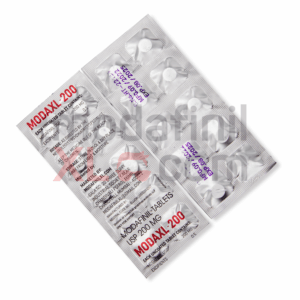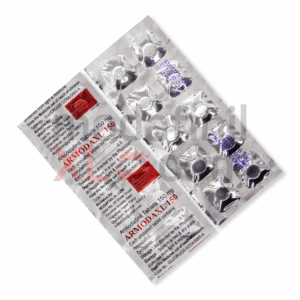Exposure Therapy for Depression
The most powerful but still poorly understood, exposure therapy appears to be a way out for anxious people with hard emotional experiences, difficult memories, or traumatic occurrences. Experiencing a stressful situation in a controlled surrounding strengthens an individual’s coping skills. Let’s have a closer look at how it works in practice.
What Is Exposure Therapy?
Exposure therapy is a psychological treatment that was evolved to help people withstand their fears. Usually when a certain object, activity, or circumstance makes people afraid, they do everything possible to avoid it. The escaping helps shortly, but the danger feeling remains and may take a turn for the worse in the future.
In such cases, psychologists recommend a program of exposure therapy to address the fear once and for all. The therapy implies environmental conditions in order to elicit the reaction to things that the people are afraid of. This method in safe conditions helps to ease and reduce fear and reject their further avoidance.
The procedure has been scientifically recognized as a helpful therapy for psychological disorders which is widely used for:
- agoraphobia (fear of open spaces);
- panic disorder;
- anxiety disorder;
- social phobia;
- obsessive-compulsive disorder (OCD);
- post-traumatic stress disorder (PTSD);
- generalized anxiety disorder.
The therapy has several types depending on the strategy:
- In vivo exposure. A few examples: those who are afraid of reptiles receive instructions how to carry them, and those who feel anxious about speaking in public should address the audience.
- Imaginal exposure. A person should imagine the scarring object or circumstance and share the impressions in order to reduce the fear feeling. This method works excellently for PTSD.
- Virtual reality exposure. This technology helps to reproduce the virtual environment that scares a patient. Patients with aerophobia are offered to have a virtual voyage in the psychologist’s cabinet where sights, sounds, and smells of the airplane are involved.
- Interoceptive exposure. Aforethought bringing on sensations that make a person afraid. Panic disorder patients may be offered to do exercises for speeding up the heart rate and seeing that this feeling is not dangerous.
A personal psychologist suggests the most effective method of treatment individually.
The therapy is placed in different ways:
- Graded exposure. The psychologist helps his client to define the fears according to their difficulty, starting from soft exposure and progressing to the hardest ones. Gradual approach shows very good results.
- Flooding exposure therapy. The therapy begins from the most difficult moments.
- Systematic desensitization. Exposure may be combined with relaxation techniques for better management and association with the feared objects.
Most people have some fears and would be glad to relieve symptoms that prevent them from living. The first logical question which comes to mind: does exposure therapy work? It is thought to help in several ways, notably:
- Adaptation. Getting through the same situation several times reduces the fear.
- Extinction. The exposure practices weaken the first terrific impressions that are related to particular situation and ensures a good outcome.
- Self-efficacy. The therapy encourages the client, making him to believe in his own power to overcome the anxiety.
- Emotional processing. New, more realistic beliefs are formed during the exposure sessions. A fresh look at the issues helps to relieve symptoms.
This type of cognitive-behavioral therapy (CBT) technique is proven when it is used by a skilled and authorized professional who specializes in this kind of therapy. When used properly, it is a powerful method of an influence on negative emotions that helps a person to overcome phobias and social anxiety.
Exposure Therapy for Depression and Anxiety Effects
Exposure therapy was the first psychosocial treatment described in detailed procedures. This definition appeared in 1960. Continuing to date, the exposure sessions have been developed, studied, and refined. Relief from anxiety-related disorders has become much more likely than it was several decades ago. Such disorders like OCD are highly treatable today. However, some patients do not benefit from this type of therapy, and many remain symptomatic.
Some experts are sure that exposure therapy may be useful for severe depressive states. While PTSD and depression have certain characteristics in common, such as flashback and memory flooding, these disorders have significant dissimilarities, too. Depression does not always imply trauma, but the archives of memories that are related to a certain stage of life or failure are defective.
The results of exposure therapy trials in depressed people showed that they can analyze the events and rede them into the more positive light. A psychologist helps to build up the «positive emotion system». But a curious fact is that depressed people may sustain a fear of having positive emotions. That sounds paradoxical, but in fact, people are frightened to change their thoughts because they are afraid of repeated complete collapse and get even more depressed because of that.
The first sessions are usually afflicting. This condition lasts up to 4 weeks. Regular work with minor fears are the steps to improvement. Homework allows doing exercises outside of the sessions and is a necessary part of the therapy. For depressed people, the total course duration is 20-24 sessions.
To improve the effectiveness of the exposure therapy in treatment of anxiety and depression, it is used in combination with virtual reality equipment. It allows transporting a patient to a calm and supportive surrounding through a series of mental visualization exercises. The aim of the procedures is the response prevention, precisely the permanent memory loss the ability to trigger intense emotional responses.
The Journal of Neuropsychiatric Disease and Treatment published the data which affirms that the combination of exposure therapy and virtual reality bring better results than with exposure therapy only. Encouraging outcomes prove high acceptability and satisfaction with the inclusion of virtual reality. The National Center for Biotechnology Information study says that virtual therapy works better than a combination of drug therapy and virtual reality therapy.
Virtual reality was used in prolonged exposure therapy to military servants. It is a costly therapy treatment which is not available over-the counter. The results are quite individual and highly depend on the skills of the psychologist to tailor the most efficient treatment to a client. This type of CBT still requires more evidence of its effectiveness. The therapy may cause severe, moderate, or mild side effects or last without any health changes. The reported conditions after exposure therapy courses are:
- flashbacks;
- anxiety;
- nightmares;
- panic attacks;
- excessive sweating;
- aggression;
- negative projection about an unknown outcome;
- blurred vision;
- stomach problems;
- vivid dreams with complex plots;
- disturbance;
- anguish of mind;
- dread;
- agoraphobia;
- increased anxiety;
- vertigo;
- dysthymia (persistent depressive disorder);
- agitation;
- back spasms;
- easy fatigability.
A patient should look at the pros and cons before starting therapy and be emotionally ready to overcome the bothering psychological disorders.
How Exposure Therapy Works?
The information about every situation, thought, object, and place go through a prism of our brain which decides whether it is dangerous or harmless. The risk factors turn into anxiety, a warning cue to alert a person and prepare for escaping from the incident in order to reduce the anxious feeling.
Avoidance is a reason for the continuance of any anxiety disorder. Escaping does not reject anxiety but only stops it for a while, preventing the brain from realizing that the incitement is not dangerous, in fact. Averting leads to worsening the anxiety in the future. In order to fix the problem, the brain should be re-trained and learn how to react differently without an anxious reaction.
Fear is a natural response to physical and emotional menace that is related to many kinds of ailments. Frightened people lose control and cannot handle the brain work or «talk» their brain out of anxiety problems. Here comes the exposure therapy that is based on extinction and used as a widely adopted method of fear control.
To make the extinction work naturally, a person should face the object of fear and be in the presence of it until it does not cause an anxious feeling. Most people do not do that, choosing avoidance as a method of saving. Fighting one’s own fearful thoughts and making the brain stop thinking about the bothering things is not successful, either.
Fear extinction was thoroughly studied. The results showed that the human brain habituation to stimuli when they fail to produce the expected reaction. Forcing a person to confront the unpleasant strong emotion for a longer period makes the mind essentially adapt to the stimulus to such an extent that it is extinguished.
What is happening in the human brain during the treatment? The mechanism is not completely understood. However, the direct connection between two brain areas was identified. They are the basolateral amygdala (BLA), that is involved in fear memory, and nucleus accumbent (NAc), the region which responds for positive, rewarding events. The network got the name the BLA-NAc circuit. The BLA is tightly linked with fear memory and positive reward learning, too. Important is to study out the following question: when a person expects something bad to happen but nothing wrong occurs, does the brain perceive it as a good matter?
Exposure therapy is one of the most successful therapies for fear-based disorders. Unfortunately, its effect is not permanent. Scientists still try to find out how to make it permanent using the rewarding extinction therapy. The tentative steps for enhancing the long-term benefit in people who suffer from phobias and PTSD were tested on rats. The test showed that the effect may be stretched for at least two months by assisting the circuit’s activity during the therapy. Further recovery of fear after two months is still unknown.
All that the researchers noticed was that the circuits remained active during the processes of fear learning and extinction. Comprehension of the molecular structures of the sub circuits are different and would promote the development of the fear extinction pathway and become a progressive step in cognitive therapy. Using such brain technologies as fMRI (functional magnetic resonance imaging) or EEG (electroencephalography) could assist the learning of the potent ways of activation of the specific brain parts during exposure therapy, including the BLA-NAc reward circuit.
Does It Work for Different Types of Depression?
Exposure therapy cures the depressive states which are overlapped with anxiety. The therapy was developed with strong support for phobias and panic disorders, as well as aimed to cure painful reactions to traumatic events.
Being a complex of poorly understood conditions, depression is often accompanied by excessive self-criticism which is a great impediment for recovering. A bit more love to one’s own personality could help sufferers to instigate long-term change. And that is what scientists of University College London and ICREA-University of Barcelona wish to attain using the virtual reality method of exposure therapy.
A trial with 15 adult patients with depression showed that virtual reality experience has made a positive impact in self-compassion, reduced self-criticism, and the symptoms of severe depression. Nine patients were completely recovered, and four patients felt significant improvement. This technique was adopted for depression cases when self-criticism is prevalent. It also could be used for people who do not admit that they have problems or seek any help.
To enhance the effect of exposure therapy for depression, doctors use deep brain stimulation (DBS) which consists of stimulating the particular areas of the brain using small electrical charges. It is a highly effective method for extreme depression.
DBS is a surgical procedure that is used in treatment of various neurological disorders, such as dystonia with concomitant depressive states. DBS is approved for people with documented OCD duration of at least 5 years, those who have completed the trials of CBH, or in cases where at least 3 selective serotonin inhibitors (SSRIs) failed. It should be noted that DBS is not appropriate for patients with such illnesses as dementia, personality, psychotic, neurological, bipolar, or cognitive disorders, but people with anxiety and/or depression that are accompanied by OCD may be considered a candidate for DBS.
Is Exposure Therapy Effective?
Those who want to get rid of phobias and other psychological disorders get curious is exposure therapy effective. It has been recognized as the most efficient method for people with various anxiety disorders and deals with deeply unpleasant runaway intrusive thoughts. Depending on the patient’s history, the method of treatment may vary.
It is helpful in such extraordinary cases as emetophobia (fear of vomiting). Light exposure therapy deals with seasonal depressions. Narrative exposure therapy is successfully used in people who have suffered from traumas due to political, cultural, or social forces (for instance, refugees). Narrative therapy tests show high effectiveness in PTSD and is conditionally recommended for the curtailing of traumatic experiences.
Getting Started With Exposure Therapy
The first important tip is to find a qualified and experienced person for this procedure. Ask a family physician for a referral or contact the American Psychological Association or the Association for Behavioral and Cognitive Therapies. Before starting the treatment course, a patient should receive a training manual and know in details what to expect from the therapist.
Being an effective maneuver for anxiety disorders, CBT may not bring positive results even after adequate dose of treatment. The latest research has shown that the effect may be improved by the use of cognitive enhancers that augment the core learning process of CBT. Modafinil (brand name Provigil) and its relative Armodafinil (Nuvigil) are wakefulness promoting agents that are approved by the FDA for treatment of excessive sleepiness, shift works disorders, and other sleep disorders. In addition, it has been used off-label as a psychostimulant for the therapy of cognitive dysfunction in some psychiatric conditions and as a general cognitive enhancer. Modafinil for depression in monotherapy showed beneficial results in severe cases even when other therapies appeared ineffective.
Consult with a therapist about the concomitant use of nootropics with exposure therapy together.
Generic versions of various psychostimulants at affordable prices are available for purchase in our drug store (see the products catalog).















